Chances are you remember where you were when you saw your first bobcat. Maybe the moment seemed haunted, the cat little more than a ghostly flash of cinnamon and yellow in a spruce thicket, there then gone. If you’re lucky, you may have observed the animal at length, seen it hunt with its eyes, slink-sauntering down fallen logs and weaving in and out of the underbrush, its body unfurling in one prolonged rhythmic gesture.
Art Whipple, of West Swanzey, New Hampshire, saw his first cat more than 60 years ago – the big tom like the head of a streaking comet that was dragging a pack of his friend’s trailing hounds. It was the early 1950s. Back then, there was a bounty on cats – $20 in New Hampshire, $10 over the river in Vermont. In 2011 dollars that’s about $178 and $89, respectively; good money for a day spent afield.
“There were a lot of cats back then, and people took too many of them,” said Whipple. His words carried the authority of a life-long trapper and naturalist who’s seen a lot of good and bad examples of animal management over the years.
Today, we know that bobcats aren’t particularly adept at resisting human exploitation, especially when food and shelter are hard to come by. With the benefit of hindsight, we see that bobcats in the Northeast benefited greatly from the conversion of forest into farmland in the 1800s, then suffered as farmland was abandoned and the forest came back in the mid 20th century. In 1959, 421 cats were submitted for bounties in New Hampshire. Eleven years later, only 10 were turned in. This mirrors the rise and subsequent fall in deer and cottontail populations, which boomed in the browse and brushy cover of a regrowing landscape then struggled as the vegetation grew above their reach. Spurred on by a shift in public attitudes toward bounty programs and by the scarcity of bobcats, the state ended the cat bounty in New Hampshire in 1973. (Bounties in New York and Vermont ended in 1971; Maine’s ended in 1975.) By the late 1970s, bobcat populations still hadn’t bounced back in New Hampshire, so hunting and trapping seasons were closed in 1977, briefly reopened, then closed for good in 1989.
Twenty years later, anecdotal evidence suggests that bobcat populations are now rebounding in New Hampshire. People are seeing more cats – including one that recently sauntered past a car dealership in urban Portsmouth in broad daylight. And Whipple, now 77 years old, is trapping cats again, not for the bounty but for science. As a participating trapper in an ongoing University of New Hampshire bobcat study, Whipple is running a string of cage traps throughout Cheshire County, in the southwest corner of the state. Last year he was catching cats so that they could be radio-collared and their movements recorded; this year he’s recatching them to remove the collars.
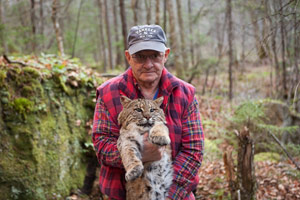
Cat in the cradle
Whipple lives in a tidy home in a working-class neighborhood in West Swanzey. Over the course of his life, he’s lived in three houses, all on this same street. “I do keep moving south,” he deadpans.
Standing outside his fur shed in the backyard, Whipple showed me how he builds a bobcat set, his gestures recreating a hemlock stand up near the “potholes” in Gilsum. His trapping partner Molly, a rotund black lab, scampered excitedly back and forth as if she, too, remembered the experience exactly the way he was describing it. Whipple wedges the cage trap firmly against a solid object, then covers it with hemlock boughs. He baits the trap with beaver or muskrat carcasses secured from his market trapline, adds a little skunk essence for good measure, maybe some feathers for attraction. In some cases, he’ll suspend CDs on monofilament fishing line around the cage. “Cats are visual animals, so they like the colors,” he said. “They like the green and red and blue on the snow as that CD spins around.”
Last year Whipple caught 10 cats, four of which were suitable to be collared and tagged; in all, six cooperating trappers caught 19 bobcats and collared 12. (Kittens and yearlings were released without collars because they’re still growing, and the collars could become a restriction.) When Whipple or any of the other cooperating trappers caught a bobcat, they’d call the study team at UNH in Durham, who would drop what they were doing and come running.
What happened next can be viewed online by visiting http://vimeo.com/10801715. Researchers tranquilized the cat, which left him conscious but immobile. A small hood was secured over his head to obscure visual stimuli. The cat was then weighed, and a small tooth was pulled to help determine his age. A tag was affixed to the ear, and the bit of ear skin from the piercing was saved for DNA analysis. A $4,000 GPS radio collar was affixed to the cat’s neck; once activated, the device sends out GPS coordinates via a cell phone pulse every 5 hours. (Despite poor cell signal in the area, the collars performed remarkably well, averaging successful readings 72 percent of the time.) The cat was given a shot of penicillin and monitored closely as he came to. Once he had his snarl back, the cage was opened and he darted like a shot into the underbrush.
Part of what makes this experiment special is the community involvement, says John Litvaitis, a professor of wildlife ecology at UNH who did his PhD work on bobcats in Maine in the 1980s. “We’re working with recreational trappers, and in many cases, we’re working with private landowners on private land. This generates a lot of excitement in the community, which is a great thing for both the science and the conservation effort surrounding this animal.”
State mandates
The UNH campus in Durham is a sprawling place. It has an old-world quality, with a train station and rows of tightly clustered buildings strung together with twisting, tree-lined paths. It’s a handsome campus, but you wouldn’t call it quaint. The brick and brownstone architecture nods to the New Hampshire mill town aesthetic and adds a blue-collar flavor to the place. In certain lights, especially in winter scenes framed by the boiler smokestack, it looks like a sprawling, post-modern factory that could be churning out widgets if it weren’t churning out educated young minds.
In the basement of James Hall, graduate student Derek Broman sits crunching numbers. Broman is friendly and easy going, a demeanor befitting a man who, at the moment, probably has the best job in the world. He devotes around 30 or 40 hours a week to the bobcat project, collecting data, compiling numbers, and building habitat models indoors; when he’s out of the office, he’s stomping around the woods with trappers, handling tranquilized bobcats, and conducting public outreach to raise awareness of the project.
The study has a number of goals. First and foremost, the state of New Hampshire wants to know how many bobcats they have. This study will produce range maps that will be used to estimate state-wide density. To make these numbers more definite, the scientists are establishing a DNA record of the trapped cats so that in the future, scat can be collected and linked to either a known cat or an unknown cat. (A cat sheds cells from its gut when it defecates, making DNA analysis of feces possible). Once a good population estimate is established, and if sufficient numbers are there, the state might open a tightly regulated bobcat hunting and trapping season, similar to those in neighboring Maine and Vermont that have continued without interruption from the 1970s.
Since bobcats are so reclusive, a secondary goal of this (and every) bobcat study is to understand the habitats they prefer. Are the cats using certain travel corridors more than others? What type of forest structure does a bobcat need to thrive? How are they competing with other predators in their niche?
A third, particularly quirky goal of Broman’s is “trying to suggest that my study is unnecessary.” Researchers are actively soliciting the general public for bobcat sightings and trail-camera pictures of cats taken within the study area. As sightings trickle in, they’ll be plotted and transposed over the radio-collar baseline data. The hope is that much of it will sync, proving that thousands of volunteer wildlife watchers can be as effective as tens of thousands of dollars.
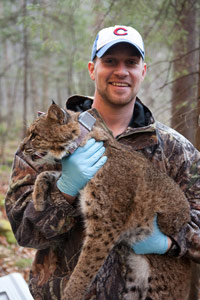
New insights into habitat needs
As you might imagine, both Litvaitis and Broman know a lot about bobcats. Talk to them for an hour and you’ll learn, among other things, that bobcats are a native predator in southern New Hampshire, unlike coyotes, which didn’t show up in this region until the 1950s. They’re almost exclusively carnivorous, unlike foxes, which, as anyone with a garden can attest, have a fondness for fruits and vegetables. They’re private animals. While many social mammals form formidable family groups, with aunts and uncles sticking around to help raise young, bobcats don’t. Males are loners with large home ranges – the less productive the habitat, the larger the range. Females have smaller home ranges that they aggressively defend against intruders. Females are smaller than you might think – fully grown, they’re only around 20 pounds, which is barely bigger than a large housecat. Males can be larger than you might think, averaging around 30 pounds, though exceptional toms can weigh in the mid-40s. (Males around here can be big enough that the collars, built to accommodate smaller western bobcats, were too small). Bobcats have fairly small litters, from one to three kittens, once per year in the spring.
All of these traits make bobcat populations relatively fragile when compared to animals like coyotes, which in some scenarios can shrug off 50 percent mortality in a given year and still increase their numbers the following spring. This is worrisome to today’s naturalists, especially in light of the fact that bobcats are directly competing with coyotes for food. (Litvaitis noted in his Maine bobcat work that a sharp decline in bobcat harvest between 1974 and 1985 correlated with a dramatic increase in coyote harvest). Bobcats are competing with fishers, too, another animal that didn’t exist in much of the Northeast 30 years ago.
“Fishers are becoming the new raccoons around here,” said Litvaitis. They’ve reestablished themselves at rapid rates because they can adapt to a food source, whether it’s a dead deer or a birdfeeder in someone’s backyard. Bobcats won’t ever have these abilities, based on their constitution.”
Because of the bobcat’s private, nomadic streak, forest fragmentation is also a concern, and they’re regularly held up as the animal poster children for why we need an intact landscape. The conventional wisdom is that they don’t adapt well to human encroachment.
After a year and a half of collecting data, there’s nothing to suggest these concerns aren’t valid, but there is good news that shows that despite these challenges, bobcats are holding their own.
“One of the things that surprised me about the data is that the cats seem to tolerate far more roads than you might expect,” said Litvaitis. While the outer boundaries of some cats’ core areas seemed to be defined by roads, others seemed far more tolerant of roads and human presence. One cat with a home range north of Marlborough seemed to think nothing of crossing Route 9. (While we’re talking about ambitious crossings, one cat crossed the Connecticut River and spent the summer in Vermont, which certainly puts a new spin on the idea that cats hate water.)
Because of historical hunting patterns that brought houndsmen from settled areas up into remote timberland to hunt cats, and because it’s still fairly rare to see a bobcat, many people assume that they’re deep-woods animals. While studies do indicate that some cats, especially denning females, select out-of-the-way home ranges, the dot maps created in this study show that some others are very much at home in edge or agricultural habitat, concentrating there at certain times of year.
“The data show that the cats spent a lot of time last summer in agricultural fields in spring and summer,” said Broman. One big male spent much of the spring casing the edges of fields, perhaps looking for fawns. This makes a certain amount of sense, since the prey base has shifted in the past 30 years as a result of changing forestry practices. Where once intensively managed timberland boasted large populations of deer and hare, today there are fewer animals in the maturing forest and more in the edge areas around human settlement. Broman’s observations matched those that were generated in a recent Vermont bobcat study, where cats were captured in surprising numbers in the Champlain Valley – an area that’s never been thought of as a bobcat hotspot. These trends seem to indicate that bobcats are adapting to our changing landscape. In the winter, the habitat needs of the New Hampshire bobcats seemed to shift, and many cats spent large amounts of time in forested wetlands.
“We weren’t expecting this,” said Broman. “Though after spending a great deal of time showshoeing through wetland areas and seeing the small mammal sign, it makes sense. I suspect that a bobcat’s agility may allow it to out-compete canid predators in these tangled, uneven terrains.”
As he continues to tease insight from the data, Broman hopes to learn what, specifically, is drawing cats to certain wetlands. He’s also hoping to plot areas of rocky refugia – the rocky outcrops that cat hunters and trappers will tell you is key cat habitat – onto the home range maps. These sites are thought to provide ideal denning areas and key escape cover.
“There are not specific maps that show rock outcrops,” said Broman, “and they can be hard to pick up on satellite images. So one of the things we’d like to do is use topographic measurements (slope and elevation, for example) to identify these ledges. Anecdotally, there’s a lot of evidence to show that cats frequent these places.”

Hope
The often difficult relationship between humankind and the animals we share the landscape with has been chronicled at length. In 1841, the Rev. Hosea Beckley absorbed the scene in the Connecticut River Valley and predicted grimly that in a short time many of the large mammals will “be among the things that were, but now have passed away.” Bobcats were called “bay lynx” back then, and were “very rare” and found only “in the most unsettled parts” of the region. Many of Beckley’s predictions proved true, though (unlike the wolf, the deer, and the turkey) bobcats hung on.
A century and a half later, we’re still colored by the sins of our past. There’s no escaping this, and it’s not necessarily a bad thing. If the past 200 years has shown us anything, it’s that wild animal populations can be fragile entities. This hard-earned lesson was invaluable.When I asked Whipple if he thought there should be a bobcat season in New Hampshire, he said: “It would be nice to have a trapping season, but I don’t want to see them overdo it.” It’s safe to assume that he speaks for everyone in the not-wanting-to-overdo-it bit.
But while it’s important to remember the mistakes of the past, it’s also important to note the conservation success stories of the present. The bobcat itself – the bay lynx – is the shining star of this animal-recovery story, but the supporting role that humans have played and are playing deserves recognition as well.
John Kallish was a hunter and naturalist who frequented the same woods that Art Whipple traps today, and he spun eloquent tales about bobcat hunting in his 1943 book Bobcats Before Breakfast. Kallish represented a new archetype in the environmental community: the naturalist sportsman. His appreciation of the complexity of human and animal interactions has today become the status quo in most rural areas. This new paradigm in which sportsmen and environmentalists find common ground and work together has tangible benefits in our natural world.
Even 20 years ago, it would have been hard to imagine scientists, college students, naturalists, and fur trappers joining forces to learn more about these woods ghosts. The work that they’re doing has nearly unlimited applicability– from creating maps of corridors that connect fragmented habitat to ensuring the isolation and preservation of rocky refugia. If Beckley documented us at our worst, the spirit of collaboration that’s on display with this New Hampshire bobcat study, this collection, analysis, and distribution of natural history knowledge, showcases us at our very best.
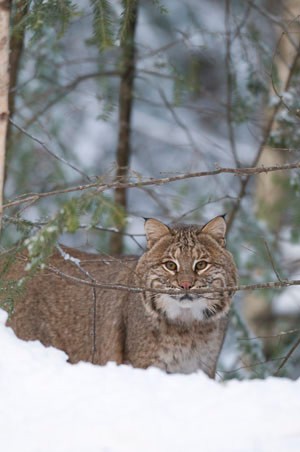
Here’s Where You Come In
As the spring issue of Northern Woodlands goes to press, the research team will be finishing up the 2010-2011 trapping season. Cats will have been captured and collared for the first time in southeastern New Hampshire, while those in the southwest will have been recaptured so that the collars can be removed.
The breadth of the third year of the study will depend upon how successful trappers were this past winter. “Trapping and field work is very expensive,” said Broman. “So if we have a sufficient success rate this year, we’ll likely spend the last years of the study analyzing our large data set.”
In the meantime, the researchers are asking for your help. If you live in southern New Hampshire and you see a bobcat, email your observation to .(JavaScript must be enabled to view this email address). Include your name, the date and time of your observation, your township, the exact location (GPS coordinates are ideal; otherwise, a detailed description), the bobcat’s activity at the time of your observation, and any other details that seem relevant.
Visit our website to get a taste of the bobcat pictures that have been submitted so far. And keep tabs on the study in the years to come by visiting this website.


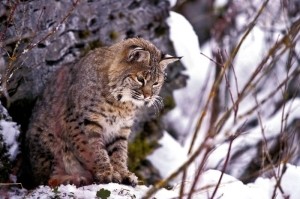

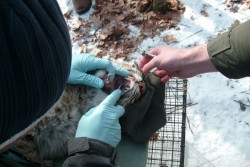


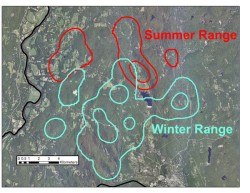
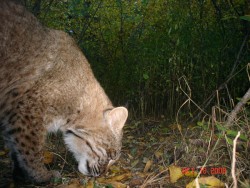
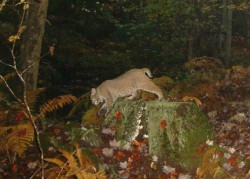
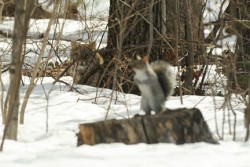

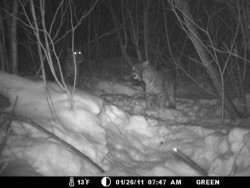
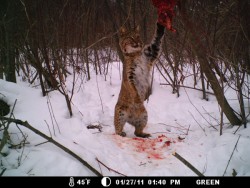
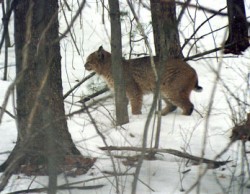

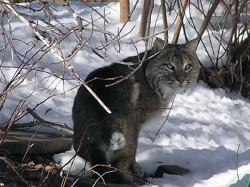
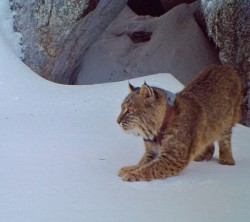

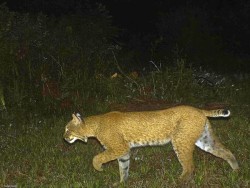

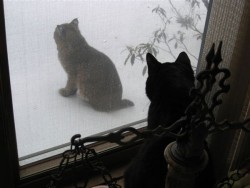
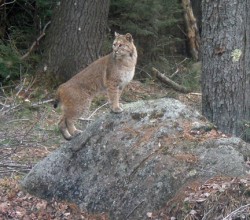
Discussion *